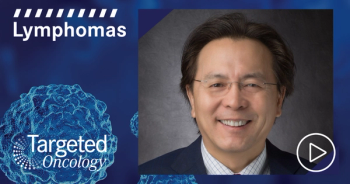
CTOS Meeting to Bring Oncologists Together, Highlight Exciting Research in Sarcoma
Alessandro Gronchi, MD, discusses the impact of olaratumab and other emerging agents for the treatment of sarcoma, as well as what to expect at this year’s CTOS meeting.
stannual meeting of the Connective Tissue Oncology Society (CTOS) is officially underway in Lisbon, Portugal.
This year’s meeting will focus primarily on the latest data in soft tissue sarcomas, osteosarcoma, Ewing sarcoma, and GIST, among other bone and soft tissue neoplasms. Formal presentations of abstracts submitted to the society will educate the audience on the latest science in this field and promote lively discussions on how to improve the treatment landscape of this disease.
One of the most recent, pivotal breakthroughs in sarcoma was the FDA approval of olaratumab (Lartruvo). In the phase II JGDG study, the combination of olaratumab and doxorubicin reduced the risk of death by 48% compared with doxorubicin alone for patients with advanced soft tissue sarcoma who are not candidates for radiotherapy or surgery.
In an interview withTargeted Oncology, Alessandro Gronchi, MD, president of CTOS, discusses the impact of olaratumab and other emerging agents for the treatment of this disease, as well as what to expect at this year’s CTOS meeting.
Targeted Oncology:What do you hope to accomplish with this year’s CTOS meeting?
Gronchi:CTOS is a meeting that has been around for 20 years. It first started in 1995, and this is the 21st annual meeting of this society, which brings together people from all over the world from different disciplines. It’s a multidisciplinary meeting, where specialists in this field from different countries gather together and network, connect, and discuss the recent, newer findings in this disease and try to find a way to collaborate to make these findings even better in years to come.
We expect to exchange on the latest advances and the recent achievements, and find a way to move these achievements further along in the future.
This is becoming the largest meeting in this disease available for sarcomaslarger than ASCO and ESMO, the largest for sarcomas. This is the broadest audience for the sarcoma field. Investigators who want to present their new results come here to do it.
What data are you most looking forward to hearing about here at the meeting?
We have data on adjuvant and neoadjuvant therapies in soft tissue sarcoma that will probably change the standard of care in this disease. Recent data from the ESMO and ASCO meetings will be put into perspective here at CTOS. We will have data on immunotherapies in sarcoma, which are fairly limited in sarcoma specifically. This is a field that’s being explored a lot in oncology in general. We have here the first data in sarcomas on immunotherapies. We will have data on bone sarcomas in general that may change the approach to this disease.
Could you discuss the recent approval of olaratumab?
Olaratumab is a drug that has been tested in combination with doxorubicin in a phase II study that was presented at ASCO a year ago and has since been published. The company received the provisional approval both in the U.S. and in Europe. There won’t be any new data on olaratumab here at this meeting, but there were results presented last year from a study that subsequently has been closed for accrual, but the data have not been analyzed yet because the follow-up is not yet mature for a final analysis. Therefore, olaratumab will not be the subject of any specific presentations here.
We will be discussing adjuvant chemotherapy in soft tissue sarcomas. One study in this setting that I’m very interested in, involves the combination of olaratumab with conventional chemotherapy.
What is the role of eribulin and trabectedin in this disease?
There won’t be any new data on these 2 specific drugs, as they were recently reported at both the recent ESMO and ASCO meetings. But these drugs will certainly become part of the standard of care in this disease.
What would you like to see in the treatment landscape of sarcoma in the next 5 to 10 years, and what do we need to do in order to get there?
I think we need to separate 2 scenarios. The first scenario is in the localized setting. I would like to see new studies addressing the need to reduce the risk of patients who have localized disease. I’d like to see neoadjuvant studies in the localized setting that may reduce the risk of recurrence for patients with this disease. The second scenario involves the newer combinations involving immunotherapies and other compounds in sarcoma, which will hopefully prolong responses as long as possible. If we can prolong the time to death, we can achieve good outcomes for patients.
What would you like the community oncologist to ultimately take away from this year’s CTOS meeting?










































